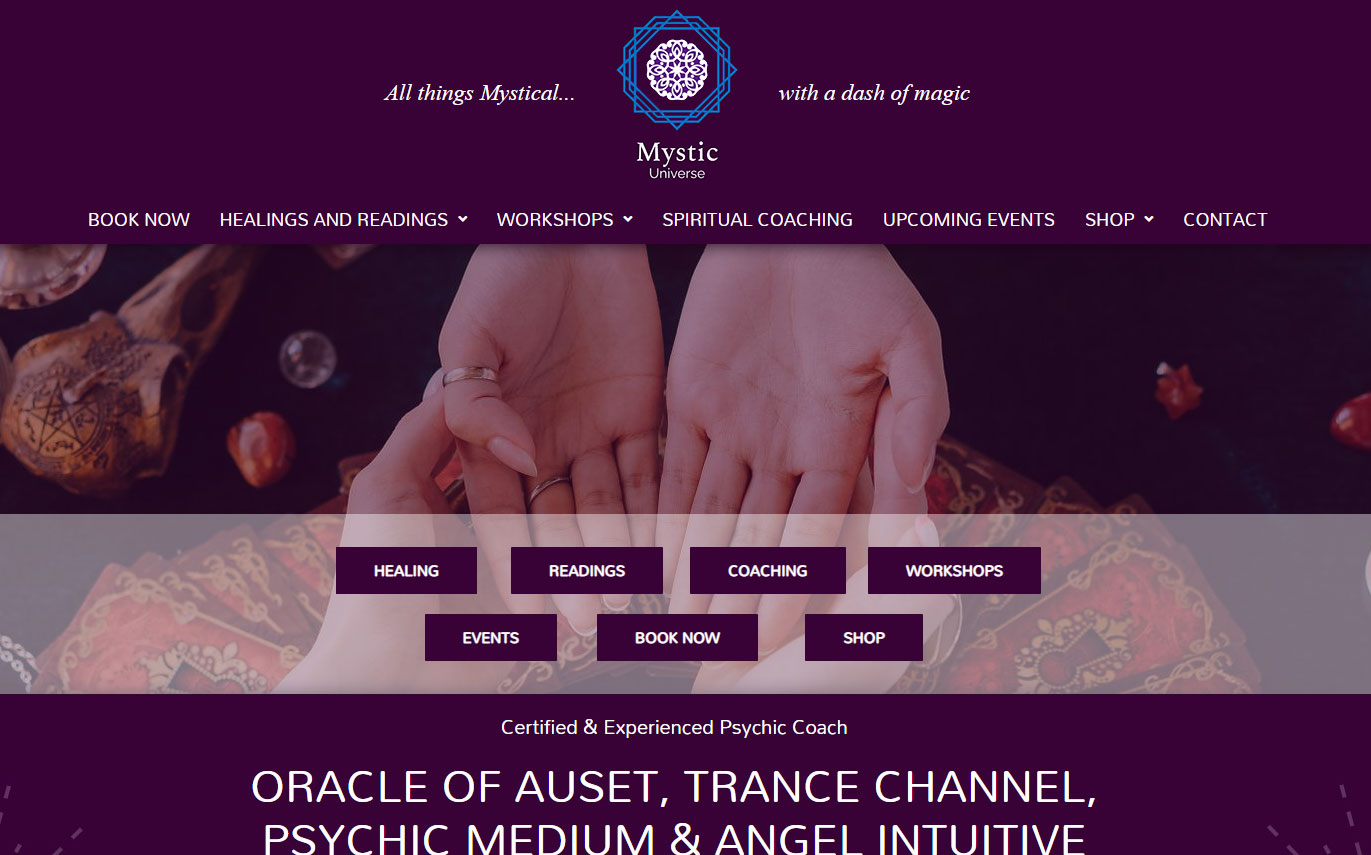Thank you Sue I appreciate your ongoing business. I have been able to create various incarnations of Sue’s website to date. I have integrated her website with the Square payment solution. Her online shop stock management integrates with Square and if a product is sold in store – the availability on her website is automatically adjusted! Appointment booking via her website is automated with calendar to avoid double bookings and to facilitate payment as well as customer booking reminders.
https://mysticuniverse.com.au/
Web design for spiritual services is a crucial aspect of creating an online presence that effectively represents and connects with individuals seeking spiritual guidance, support, and resources. Whether it’s a spiritual retreat center, meditation studio, astrology service, or spiritual coaching business, a well-designed website can help convey the essence of the spiritual services and engage visitors in a meaningful way. In this article, we will explore key elements and considerations for designing websites tailored to spiritual services.
- Reflect the Spiritual Brand: The website design should align with the overall branding and identity of the spiritual service. Consider the color palette, typography, and imagery that evoke a sense of tranquility, spirituality, and peace. Choose soft and soothing colors, elegant fonts, and high-quality images that resonate with the target audience. The design should visually reflect the spiritual values, philosophy, and atmosphere of the services being offered.
- Clear and Engaging Messaging: Craft clear and engaging messaging that conveys the purpose and unique offerings of the spiritual services. Clearly articulate the mission, values, and benefits of engaging with the services. Use concise and compassionate language to create a connection with visitors and communicate the transformational experiences they can expect. Focus on the emotional aspects and positive impact of the services, such as personal growth, healing, or finding inner peace.
- Easy Navigation and User Experience: Ensure the website has a user-friendly navigation structure that allows visitors to easily find the information they need. Organize the content into logical sections, such as services, about, testimonials, events, blog, and contact. Use intuitive menu labels and consider the user journey, guiding visitors through the website with strategically placed calls-to-action. Incorporate search functionality and breadcrumb navigation to further enhance the user experience.
- Service Descriptions and Benefits: Provide detailed descriptions of the spiritual services offered, including their purpose, techniques, and benefits. Clearly explain how each service can support visitors’ spiritual growth, healing, or self-discovery. Use storytelling techniques and testimonials to illustrate real-life experiences and outcomes. Include information about the qualifications, expertise, and background of the spiritual practitioners or teachers to build trust and credibility.
- Events and Workshops: If the spiritual services include events, workshops, or retreats, create dedicated pages to highlight and promote these offerings. Provide comprehensive details about the upcoming events, including dates, locations, topics, and pricing. Include a registration or booking process that allows visitors to secure their spots easily. Showcase testimonials or photos from past events to evoke a sense of community and anticipation.
- Blog and Resources: Incorporate a blog or resources section to share valuable content related to spirituality, personal development, or holistic well-being. Publish insightful articles, guided meditations, inspirational stories, or expert interviews that align with the spiritual service’s focus. Offer downloadable resources, such as e-books, worksheets, or audio recordings, to further support visitors’ spiritual journeys. Regularly update the blog to keep visitors engaged and demonstrate the service’s expertise and commitment to ongoing learning.
- Testimonials and Social Proof: Include testimonials and social proof from satisfied clients or participants to build trust and credibility. Display authentic reviews, success stories, or video testimonials that highlight the positive experiences and outcomes of engaging with the spiritual services. Incorporate client photos and specific details to enhance authenticity. Social proof plays a significant role in attracting new clients and demonstrating the effectiveness of the services.
- Contact and Communication: Make it easy for visitors to contact and connect with the spiritual service. Provide multiple contact methods, such as phone numbers, email addresses, or contact forms. Include a clear call-to-action on each page, encouraging visitors to reach out for more information or to book a consultation. Consider integrating live chat functionality for real-time support. Responsiveness and timely communication are vital in the spiritual services industry.
